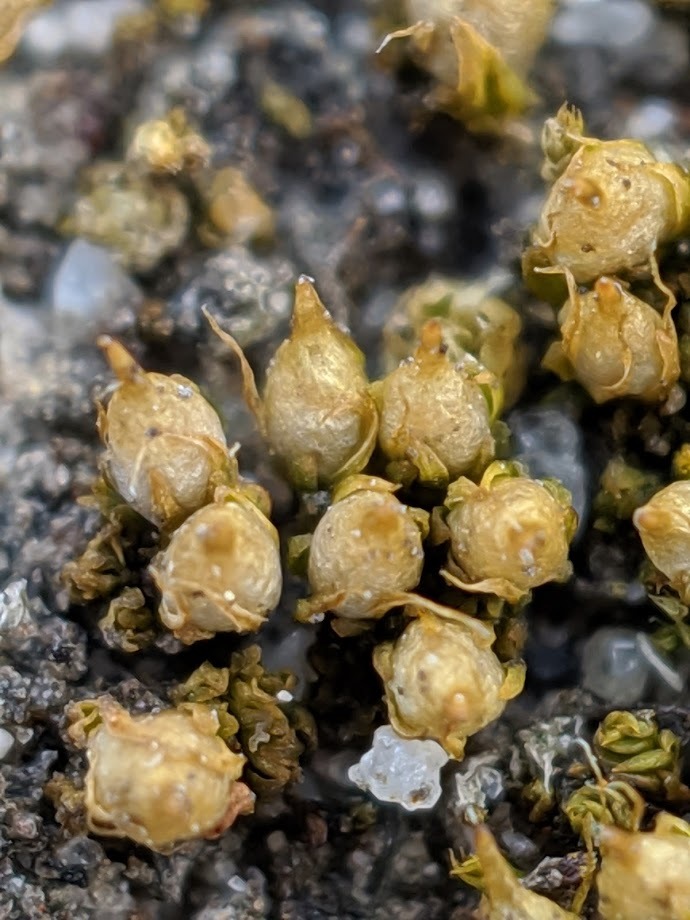Encalyptaceae
Goniautoicous, paroicous or dioicous (not in Victoria). Asexual reproduction by filamentous rhizoidal gemmae in tufts on stems (not in Victoria). Scattered plants or tufts on soil or rocks. Stems short, simple or irregularly branched, tomentose at base or throughout; central strand absent or weakly differentiated. Leaves spirally arranged, monomorphic or becoming larger toward stem apex, spreading to reflexed when moist, incurved and variously twisted or contorted when dry; apex rounded, obtuse, acute, or acuminate, sometimes with a hair-point; costae single, sometimes weak near base, subpercurrent to long-excurrent; margins entire to serrulate, plane to weakly recurved or incurved, sometimes with a weak border of more elongate cells near base; laminal cells quadrate or rhombic to rectangular, smooth or pluripapillose on one or both surfaces toward apex; alar cells not differentiated. Acrocarpous. Capsules erect, straight, exserted, emergent or immersed, operculate or cleistocarpous. Calyptra mitrate, large, completely enclosing capsule or not rupturing from the vaginula, instead remaining intact as an epigonium and enclosing seta and capsule, smooth or papillose, glabrous. Peristome absent, single (not in Victoria) or double (not in Victoria).
2 genera and 41 species shared between all continents of the world and larger islands (e.g. Madagascar, New Zealand and Japan); one genus and two species in Victoria.
The two species that previously formed Bryobartramia and the monotypic family Bryobartramiaceae were transferred to Encalypta (Ignatov et al. 2016; Ignatov & Fedosov 2018) based on them being derived from an Encalypta ancestor in phylogenetic analyses of chloroplast DNA sequences (Liu et al. 2012; Ignatov et al. 2016).
 Spinning
SpinningHorton, D.G. (2012). Australian Mosses Online. 20. Encalyptaceae. http://www.anbg.gov.au/abrs/Mosses_online/Encalyptaceae.pdf.
Ignatov, M.S.; Fedosov, V.E. (2018). A new name in Encalypta (Bryophyta). Arctoa 27: 226.
Ignatov, M.S.; Fedosov, V.E.; Fedorova, A.V.; Ignatova, E.A. (2016). On the systematic position of Discelium (Bryophyta). Arctoa 25: 278–284.
Liu, Y.; Budke, J.M.; Goffinet, B. (2012). Phylogenetic inference rejects sporophyte based classification of the Funariaceae (Bryophyta): rapid radiation suggests rampant homoplasy in sporophyte evolution. Molecular Phylogenetics and Evolution 62: 130–145.



